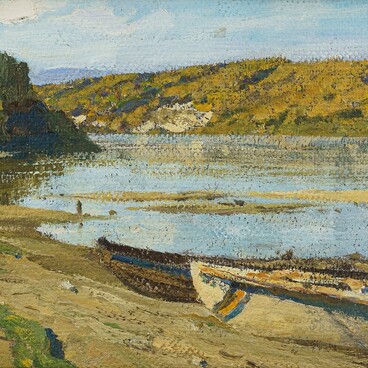Mikhail Vasilyevich Boskin was born into a large peasant family in 1875 in the village of Karelovshchina, Gdov district, St. Petersburg Governorate. When he was thirteen, he came to St. Petersburg where he began working at a tobacco factory. However, a year later in 1889, he entered the Drawing School of the Society for the Encouragement of Arts, and then for several years he attended the Academy of Arts as a non-matriculated student. The famous Russian painter Ivan Ivanovich Shishkin was one of Boskin’s teachers.
Mikhail Boskin’s skills peaked in the 1910s, when he actively collaborated with the Society for Travelling Art Exhibitions. Mikhail Boskin’s paintings received acclaim abroad, and a series of postcards featuring reproductions of his works were issued.
The artist’s technique was enriched by the new experience he had in his trips abroad, and his manner acquired the charm and expressive characteristics of Impressionism. In 1910, Mikhail Boskin moved to Sergiyev Posad. After the Russian Revolution, Boskin became a member of the Commission for the Protection of Monuments of Art and Antiquities of the Trinity Lavra of St. Sergius.
The painting “Sunday” by Mikhail Boskin, presented at the Khimki Art Gallery, depicts the life of a Russian village on a Sunday afternoon. Born and raised in the Russian countryside, the artist knew and loved rural life. The festivity of a weekend day is emphasized by the liveliness of the street and the people’s festive clothes. The joyful mood is enhanced by the bright and clear colors, shades of red, yellow, and white in combination with the contrasting blue sky and the green grass.



